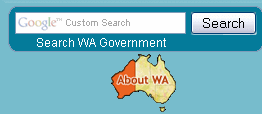Where do you start when you are asked to write a design brief for a government website? The usual place – Google! I hunted around for examples and decided this was how I was going to structure mine.
About the site – what is your site about – how and why did it come into being. Why is it here? Does it support a government policy, or is it a corporate site for a government department?
Provide some background about your site. Things you might consider including:
- Competitor sites – who are they – provide links
- Current marketing activities – do you provide any newsletters, news feeds, what are the services the site offers?
- Current features offered on the existing site- such as subscription to newsletters, membership facilities, email a friend etc
- Current traffic levels – eg., visitors, visits, page views, bounce rate, search engine referrals, average time on site,
- Technology used – what is your existing CMS, hosting platform etc – if that is relevant.
- Target audience – including any real demographic data you have collected along the way
Current issues with the site design – what is wrong that you know needs fixing, changing, sprucing up, etc.
New Design
- Goals – what do you want to achieve? Do you want more subscribers to your newsletter, more members? Do you want to make the site functional and easy to use? Do you want to keep your existing visitors returning?
- The Web site Design – what standards should it comply with? Should it comply with the W3C web accessibility guidelines – do want to follow WCAG 1.0 or WCAG 2.0? Should the site look like it belongs to a family of sites? Do you want to specify a CMS or do you want the designer to do that? Do you have specific graphics or photos that must be used? Do you want to use a 3 column or 2 column layout or aren’t you too fussed about that? Do you want to use flash or not? Must not compromise the search engine optimization of the existing site!
- The Newsletter Design – do you want to design a newsletter layout which compliments your new web site design? It would probably make sense to do them both at the same time, so that when you launch with your new design, the newsletter will match the site.
There are probably a myriad of other things you could include. Please add your comments on what you would include in a web design brief for a government web site.


